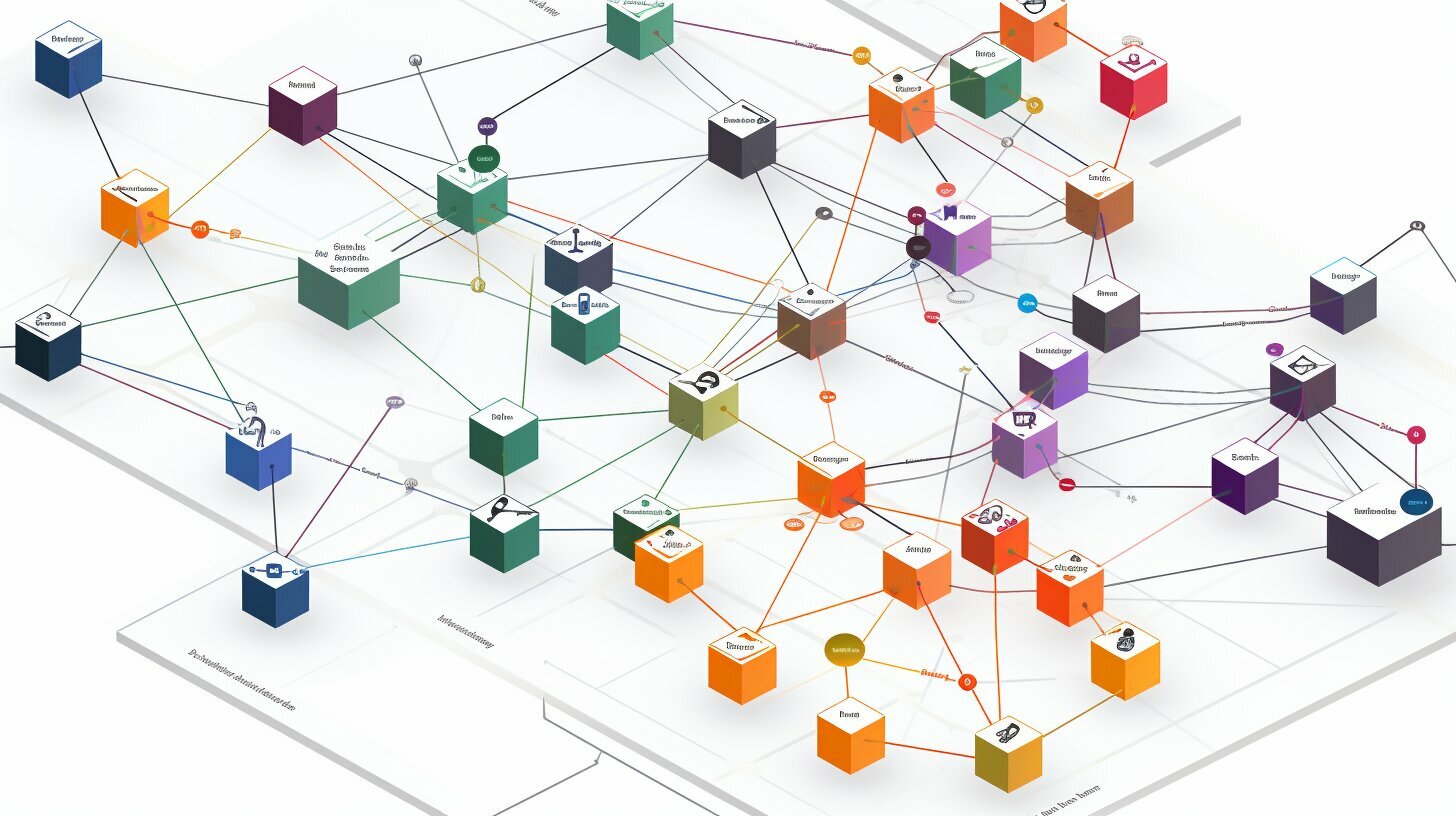Microservices architecture has gained significant popularity over the years for developing large scale cloud-based applications. However, as the number of services increases, managing and coordinating them becomes a complex task. This is where service discovery plays a crucial role.
Service discovery is the process of identifying and locating services in a distributed environment. It enables services to find each other and communicate efficiently. In this article, we will explore the concept of service discovery, its importance, and how it plays a crucial role in optimizing microservices architecture.
Key Takeaways
- Service discovery is a crucial component of microservices architecture
- Service discovery enables effective communication and coordination between services in a distributed environment
- Service discovery protocols, mechanisms, and tools play a significant role in streamlining the discovery process
- Effective service discovery in cloud environments requires specific considerations and best practices
- Utilizing a service discovery framework can significantly optimize overall system performance
Understanding Service Discovery
Service discovery is a critical component of microservices architecture. It enables services to locate and communicate with each other seamlessly, promoting scalability, efficiency, and simplified application management. To implement effective service discovery, it is crucial to understand the various protocols, mechanisms, and tools that form the backbone of the process.
Service Discovery Protocol
Service discovery protocols dictate how services communicate and exchange information. Some of the most widely used protocols include Simple Service Discovery Protocol (SSDP), Domain Name System Service Discovery (DNS-SD), and Multicast Domain Name Service (mDNS). Each protocol has its own strengths and limitations, and choosing the most appropriate one depends on factors such as the architecture and infrastructure in use.
Service Discovery Mechanism
The service discovery mechanism defines how services are registered, located, and connected. Some common service discovery mechanisms include client-side discovery, server-side discovery, and agent-based discovery. In client-side discovery, the client is responsible for locating and connecting to services, while in server-side discovery, the server is responsible for registering the services and making them available for discovery. Agent-based discovery, on the other hand, involves using an intermediary agent to facilitate the discovery process.
Service Discovery Tools
There are numerous tools available for implementing effective service discovery, including Consul, etcd, ZooKeeper, and Eureka. These tools provide a framework for registering, discovering, and connecting services, streamlining the overall process and promoting efficiency. Each tool has its own unique features and benefits, and selecting the most suitable one depends on factors such as scalability, performance, and ease of use.
“Service discovery protocols dictate how services communicate and exchange information.”
Understanding the different approaches to service discovery is essential for optimizing microservices architecture. By leveraging the appropriate protocol, mechanism, and tool, it becomes possible to optimize communication and coordination between services, promoting seamless integration and effective service delivery.
Service Discovery in Distributed Systems
Service discovery plays a crucial role in ensuring efficient communication and coordination between services in a distributed environment. In a distributed system, services are spread across multiple nodes, making it difficult to locate them. Service discovery solves this challenge by automating the process of discovering the location and availability of services.
There are different approaches to service discovery in distributed systems. One popular approach is a centralized service registry, where all services in the system are registered in a central location. This approach ensures that all nodes can access the registry to locate services, but it creates a single point of failure and can become a performance bottleneck.
Another approach is a peer-to-peer service discovery mechanism, where services broadcast their availability to other nodes in the system. This approach is more robust and fault-tolerant, but it can be challenging to manage as the number of services and nodes increase.
A hybrid approach combines the benefits of both centralized and peer-to-peer service discovery mechanisms. In this approach, some critical services are registered in a central registry, while non-critical services use a peer-to-peer mechanism to announce their availability. This approach provides a balance between robustness and scalability.
| Service Discovery Architecture | Advantages | Limitations |
|---|---|---|
| Centralized registry | Centralized management, easy to use for small systems | Single point of failure, performance bottleneck for large systems |
| Peer-to-peer | Robust and fault-tolerant, easy to scale | Difficult to manage for large or dynamic systems |
| Hybrid approach | Provides a balance between robustness and scalability | Can be complex to implement and manage |
Choosing the right service discovery architecture depends on the specific requirements of the distributed system. Factors to consider include the number of services and nodes, the level of fault tolerance required, and the complexity of the system.
Effective service discovery in distributed systems requires careful planning and best practices. These include regularly monitoring the registry for stale or missing services, implementing appropriate security measures, and using a reliable network infrastructure.
Service Discovery in Cloud Environments
Deploying microservices in cloud-based environments poses unique challenges for service discovery. The dynamic nature of cloud-based architectures requires a flexible and adaptable approach to service discovery.
To optimize service discovery in cloud environments, it is essential to implement best practices that account for the specific characteristics of these systems. These include:
- Centralized service registry: A centralized service registry can help manage service discovery by providing a single source of truth for all service information. This ensures that services are easily located and that applications can interact with them seamlessly.
- Load balancing: Load balancing is necessary to ensure that incoming requests are distributed evenly across all available instances of a service. This promotes scalability and prevents bottlenecks that can impact performance.
- Health checks: Health checks can help detect and resolve service failures by monitoring service availability and performance. This ensures that only healthy services are being used, minimizing downtime and enhancing system resilience.
- Auto-scaling: Auto-scaling is a crucial aspect of service discovery in cloud environments, allowing systems to automatically adjust to changes in demand by scaling resources up or down as needed. This ensures that the system can handle fluctuations in traffic and maintain optimal performance.
In addition to these best practices, it is also important to choose a service discovery tool that can effectively handle the unique challenges of cloud-based architectures. Some of the most popular service discovery tools for cloud environments include:
| Tool Name | Description |
|---|---|
| AWS Cloud Map | AWS Cloud Map provides a highly scalable and available service registry for managing microservices in AWS. It supports both DNS-based and API-based service discovery. |
| Consul | Consul is a popular service mesh solution that provides a flexible and configurable architecture for managing microservices. It includes service discovery, health checking, load balancing, and traffic management. |
| ZooKeeper | ZooKeeper is a centralized service registry for distributed systems that offers a high level of reliability and fault tolerance. It provides service discovery, synchronization, and configuration management. |
Effective service discovery in cloud-based architectures is critical to optimizing performance and achieving seamless communication between microservices. By implementing best practices and using the right tools, organizations can ensure that their systems are optimized for the dynamic and ever-changing nature of cloud environments.
Conclusion
Service discovery is a critical component in microservices architecture that enables efficient communication and coordination between distributed services. Throughout this article, we have explored the various protocols, mechanisms, and tools used in the service discovery process, as well as the unique considerations and challenges that arise in cloud environments.
In conclusion, effective service discovery is essential for optimizing the performance and scalability of microservices architecture. By utilizing a service discovery framework, organizations can streamline the discovery process and ensure the reliability and resiliency of their services.







